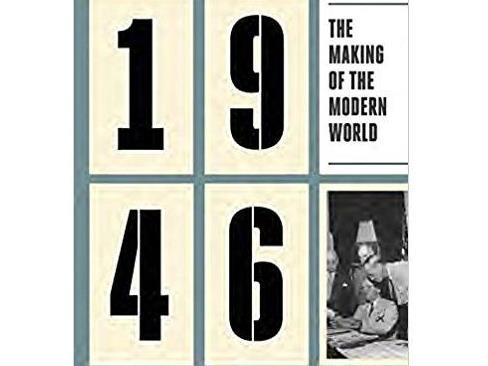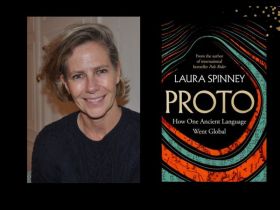Book cover image: 1946 – The Making of the Modern World by Victor Sebestyen via Penguin Random House.
The famous historian Sir Lewis Namier argued in 1948 that ‘Learning lessons of history can surely be seen as a pressing necessity.’ He wrote this in the hope that a knowledge of history would help decision-makers to avoid repeating past mistakes. For those that share that point of view, 1946 is a valuable addition to the body of history.
In the immediate aftermath of the second World War, Europe was in turmoil with millions of displaced persons starving to death. Great Britain was beginning to realise it was no longer the centre of a world-wide empire. Stalin’s Russia and Truman’s American were already at loggerheads. India’s Muslims and Hindus were tearing their country apart. Mao Tse-tung was leading the Chinese communists to victory over Chiang Kai-shek. General MacArthur was beginning to transform Japan from a warrior nation to a peace-loving society. With regard to Palestine, ‘Britain had made similar, if not identical, pledges to two different groups of people and hoped neither would notice – or complain’ resulting in Palestine being referred to as the ‘twice-promised land.’
It is not pleasant to be reminded of some of the horrors of the years preceding 1946, including the six million Jews who died in the Holocaust, the three million Russian prisoners-of-war who also died, and the many, many other people who were killed fighting or died as civilians. Nor do the many atrocities of that period, such as when the Japanese ‘blew up all the dykes along the Yellow River, flooding three million acres of good farmland … that caused enduring hunger for millions’, make for happy reading. In both Berlin and Hiroshima, around three quarters of all the buildings were destroyed by Allied bombing, and so on.
Victor Sebestyen extensively details these and many other facts in 1946. He describes the decisions made by the leaders of the postwar world and their advisers. He helps to recreate the atmosphere of that time to make those decisions intelligible from this distance. Because according to Sebestyen, those decisions have profoundly influenced the world as it is today.
One of the better known and wiser strategies of that period was the visionary Marshall Plan, which invested 13 billion dollars to kickstart the European economies and which marked America’s emergence from isolationism. General MacArthur’s transformation of Japan remains an outstanding achievement if not all the methods employed to get there were laudable. The United Nations came into being and has achieved much even while falling far short of the expectations of its founders.
Sebestyen points out that for Germany to recover, the Allies had to appoint former Nazis as police officers, manufacturers, administrators, doctors, lawyers and judges. While this did not happen immediately after the war, it happened as a necessity over a relatively short time. The dichotomy between the ethical and the practical looms large. Any lessons learnt from this were evidently not employed when Saddam Hussein was overthrown in Iraq in 2003.
For all who believe that lessons can be learned from history to improve decision-making, 1946 is a valuable asset. And those who marvel at the mess humankind has made of this world will also find pointers to some of the causes in this fascinating book.
4 1/2 stars out of 5
1946 – The Making of the Modern World
By Victor Sebestyen
Paperback
Category: European World History | 20th Century
Penguin Random House
Nov 29, 2016 | 480 Pages





